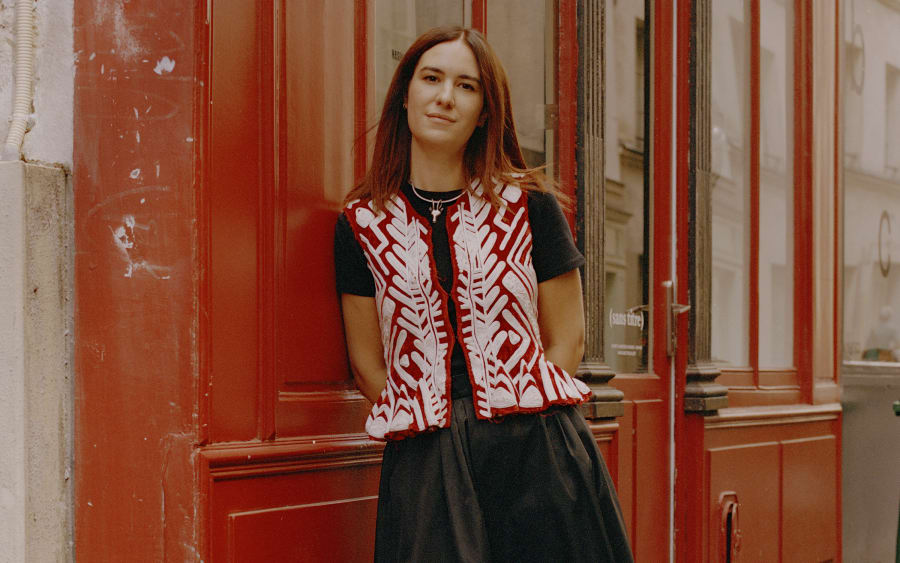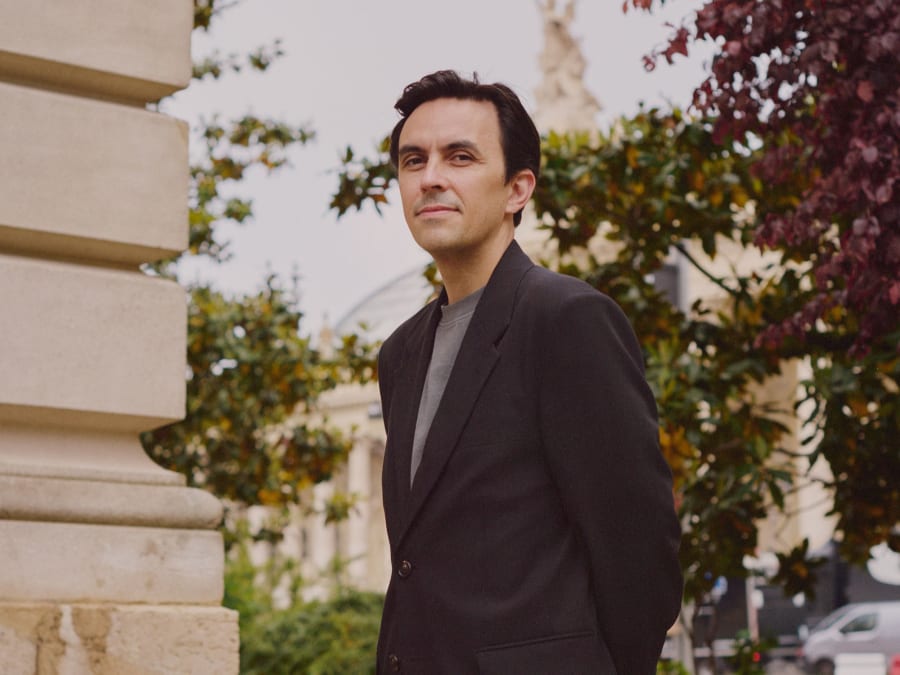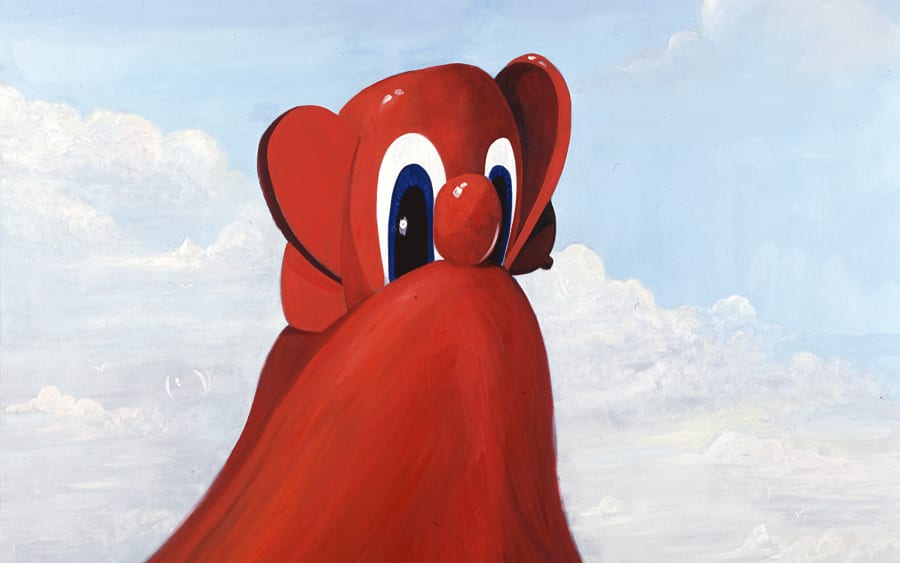‘It’s surprisingly fine,’ Joumana Asseily tells me in response to the inevitable question about how things are going these days in Beirut. ‘There are openings and traffic.’ Asseily has a disposition that speaks to the three major cities in her life – laid-back from Los Angeles, sophisticated from Paris, intense from Beirut. She laughs, catches her breath, and then lowers her voice. ‘It’s all surreal.’
Asseily is the founder of Marfa’ Projects, a gallery that takes its name from the Arabic word for ‘port.’ The space occupies two glass-fronted former garages, both long and narrow, with an office and a tiny exhibition area for video installations at the back. It’s located on a narrow street, one of several cutting through a neighborhood that must be the most unlikely arts district on Earth. True to its name, Marfa’ Projects is wedged between Beirut’s working port and the Charles Helou bus station, which connects the Lebanese capital to the rest of the region. Crammed, loud, and chaotic for most of the day, this quarter would feel impossibly claustrophobic were it not for fact that it overlooks a wide blue expanse of the Mediterranean Sea. It’s both the oldest and largest entrance to the city and its multipronged network of escape routes. It’s also populated almost entirely by ramshackle, single-story customs offices and the small businesses that serve them – bakeries (afran), little grocery stores (dakakeen), storage units, expeditors, exchanges, and companies looking after the care and maintenance of ships.
‘It’s all customs. It’s all trucks and men screaming. It’s very active,’ Asseily explains affectionately. ‘It’s very central. It has a special energy. It’s busy until the afternoon and then everybody leaves and we have the street to ourselves. You have taxis leaving from the Damascus Road to Syria. You have the sea. You have the bus station. It breathes. It’s all coming and going.’
Asseily has brought together a group of artists as diverse and varied as her reasons for starting the gallery in the first place, which range from creating a space for contemplating art to building a local collector base and working with excellent artists who did not otherwise have solid representation. She has organized exhibitions of bold figurative painters such as Tamara Al-Samerraei, Maysam Hindy, Omar Fakhoury, and Talar Aghbashian. She shows the photographer Mohamad Abdouni, winner of the Lafayette Anticipations prize in 2023. The filmmaker Rania Stephan staged a crucial exhibition at Marfa’ Projects in the summer of 2016, which featured two of her video works – The Three Disappearances of Soad Hosni (2011) and Memories for a Private Eye (2015) – and marked a major turning point in her career. It also announced the seriousness of Asseily’s intentions.
Not only has she presented the muscular concrete sculptures of Saba Innab, multimedia installations by Lamia Joreige and Paola Yacoub that are as cerebral as they are tactile, unclassifiable works by Caline Aoun, Stéphanie Saadé, and Majd Abdel Hamid that are both tender and robust, and the vivacious sense of humor running through the elaborate projects of Vartan Avakian and Ahmad Ghossein. Asseily has also reintroduced the work of the Lebanese painter Seta Manoukian – initially to local Beiruti audiences, who had not seen a new canvas of hers since the 1980s, and then to the rest of the world. Asseily insists on Manoukian’s position as a contemporary artist fully engaged in questions about what it means to be a 21st-century painter, one with a long memory of political violence (Manoukian left Lebanon during the country’s 15-year civil war) measured alongside a deep spiritual practice: In 2005, within two decades of leaving, she was ordained as a Buddhist nun.
Like Manoukian, Asseily grew up in Lebanon during the civil war, albeit at a later stage in the conflict. ‘As a kid, when I was playing, it was the war, and we didn’t really have school for two or three years,’ she recalls. ‘I didn’t have that many toys. But I would imagine them and I would draw what I imagined. I probably wanted to be an artist but was too scared to say so.’
She left for Paris and studied interior architecture at Penninghen. Her formation there was intense. ‘I had amazing teachers,’ she says. She had to do two years of drawing – nudes, still lifes, architectural perspectives. Then, when she was 20, Asseily walked into an exhibition of Mark Rothko’s paintings at the Musée d’art Moderne de Paris. It was 1999, and it was the first major retrospective of Rothko’s work in the French capital after the artist’s death in 1970. ‘It captivated me,’ Asseily says. ‘The colors swallowed me. It was my first intense experience of art.’
After that, she says, ‘I always wanted to create a space to show art. I loved the scenography.’ Asseily ended up in Los Angeles, and then, in 2005, returned to Beirut with her family. It wasn’t a move she had wanted to make and at first she was resistant. ‘I had this idea that nothing was happening here and that everyone was a snob.’ Little by little, she got to know and eventually understand the inner workings of the local art scene, which was incredibly dynamic in those days. Ashkal Alwan was organizing the Home Works Forum and a nimble, shape-shifting art school known as the Home Workspace Program. The Arab Image Foundation was touring projects around the world. There were film festivals galore. Lebanon had its first national pavilion in Venice. Sfeir-Semler Gallery opened in another wild neighborhood, Karantina, becoming the city’s first truly blue-chip gallery. Asseily supported the Beirut Art Center (BAC), which opened in 2009, and then got involved in Alwan’s new space, next door to the BAC in Jisr el Wati, joining his board and helping to build up his initiative’s library. It took her ten years, but in 2015 she was ready to strike out on her own.
‘I didn’t know [Marfa’ Projects] would be a commercial space at first,’ Asseily says. She remembers noting that there were many arts institutions in Lebanon but that artists were still struggling to make a living. She began meeting with gallerists whenever she traveled, asking them, ‘Does it make sense? How does it work?’
For a country that has experienced far more than its fair share of disasters, both natural and man-made – from earthquakes in antiquity to civil war in the late 20th century and spasms of regional violence in the 21st – opening a gallery was always going to be a dicey endeavor. But since Marfa’s debut, Lebanon’s economy has collapsed. Its young people have started a thrilling revolution that was defeated by exhaustion and the COVID-19 pandemic. And then, on August 4, 2020, the port, Marfa’ Projects’ neighborhood, exploded in a horrific pink cloud of ammonium nitrate. Everyone was traumatized. The decision to get up and begin again (or not) was neither easy nor obvious.
Asseily decided to reopen for her artists, for her neighbors, and for the ways in which arts and culture have stitched their way so delicately into the area. She and Foron Samir, the bakery on the corner that sells the Lebanese flatbread traditionally served for breakfast, were the first to resume, in May 2021. ‘We’ve had periods that were calm after the blast,’ Asseily tells me. ‘Now we’re busy. But the space is intentional. You have to decide to come here. You don’t just pass by. We have our regular collectors who are very faithful and come to every show. But we also have a larger audience who are very curious. Maybe they also come to every show but only buy once. Or they follow us on social media and ask lots of questions.’ Now schools visit, and the gallery is celebrating its 10th anniversary with a special group show opening right after its participation in Art Basel Paris. Surprisingly fine indeed.


